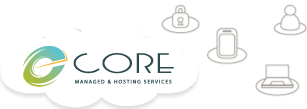3 Tips for an Effective Data Strategy
In today’s world, data is power – there is no denying that. If this power is in the right hands and used at the right time in the right context it can become a potent weapon and vice versa if misused.
CoreIT presents top three tips for the deployment of a successful data strategy below:
1. Use Data before it Loses Value
Many companies have transitioned to provide interactive analytics that let data scientists and business owners view trends and variances and conclude what will work and will not after the data is captured. With this, the loop from data capture to action is automated using the fastest data analysis and AI technologies providing the closer point of action to the source of data. Edge computing complements the cloud and can take place to enjoy better and faster intelligence-oriented action. This can only be achieved when the data is utilized in the shortest period of time.
2. The context for the Action
It is necessary that a business’s analytics or AI solution use as much context as possible to maximize insights accuracy. This often includes event context, historical context, operational context and environmental context.
Information extracted from the event such as web request details, sensor data, or voice command comes under event context while the historical context is information gathered over time such as the stock price geolocation of a car, etc. Information from operational data systems constitutes of operational context and things that may affect an event like weather, traffic conditions, market trends, etc. come under environmental context.
By integrating a real-time database as part of the streaming tools that store the aggregated data or cache the database may be able to serve many concurrent operations simultaneously.
3. Building continuous online service
CoreIT believes that adopting an agile cloud-native methodology of continuous development and integration can help to evolve, auto scale, and upgrade independently with few simple and well-defined goals or features This often involves serverless functions, microservices among other technologies.







